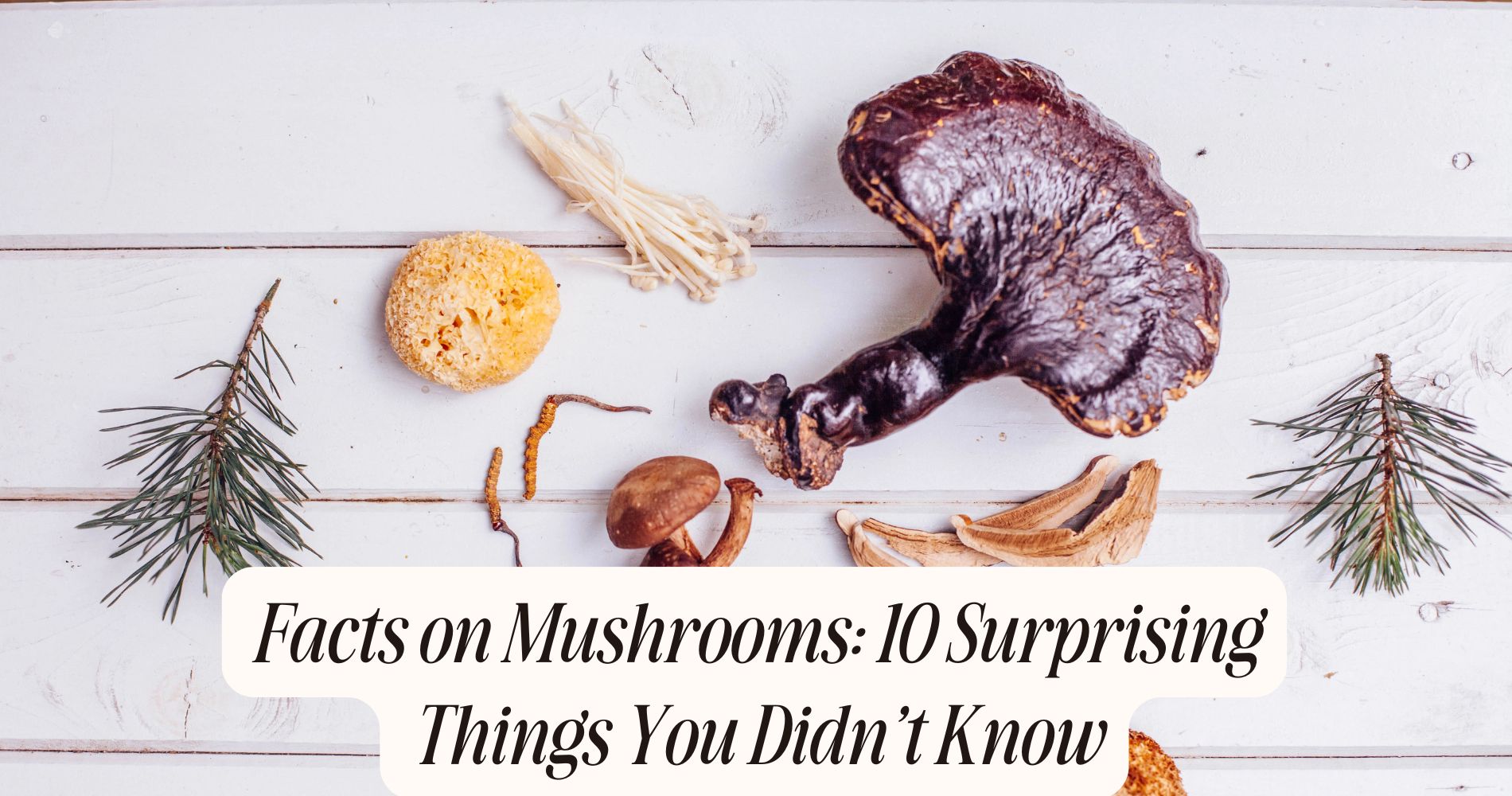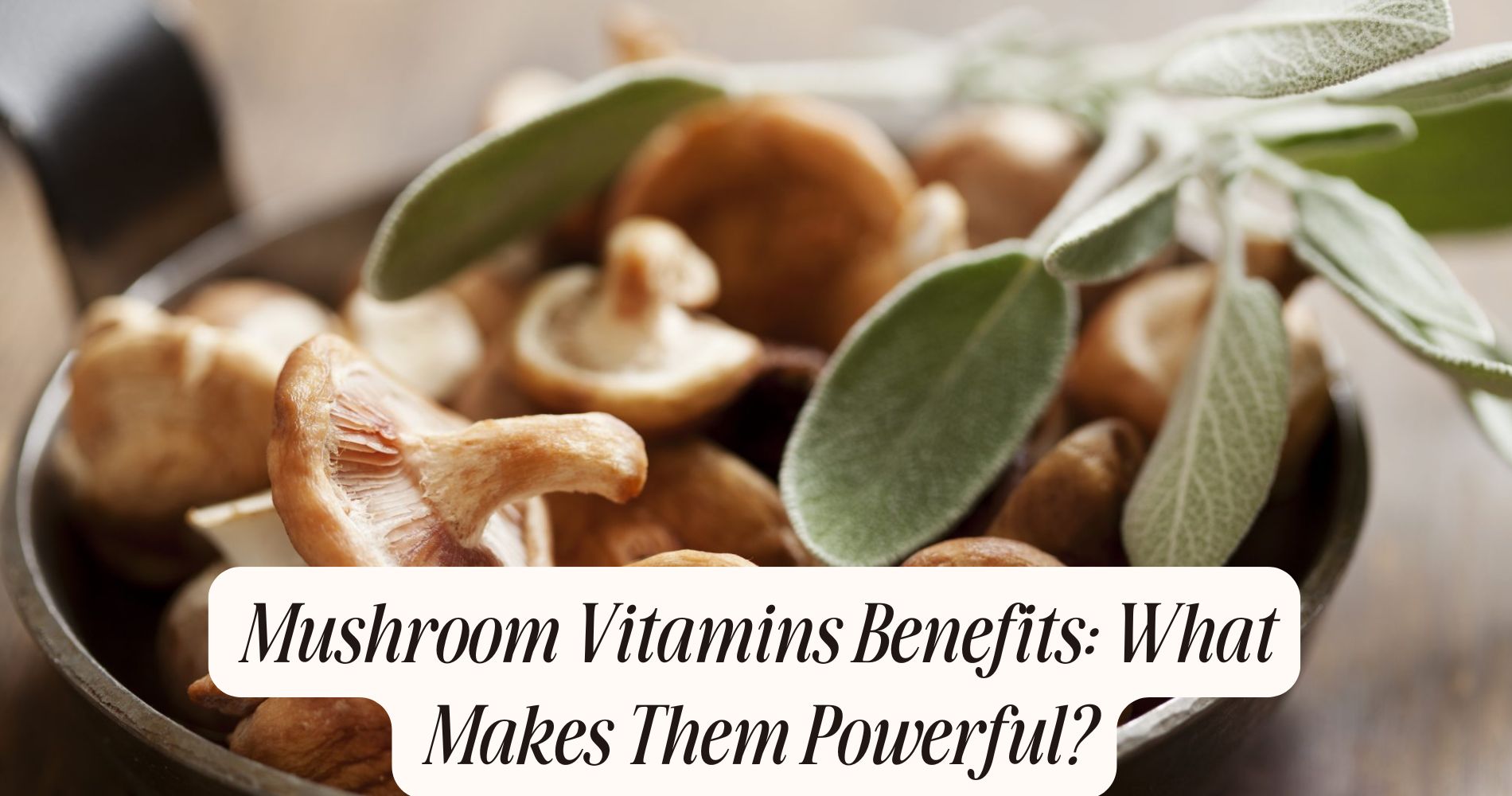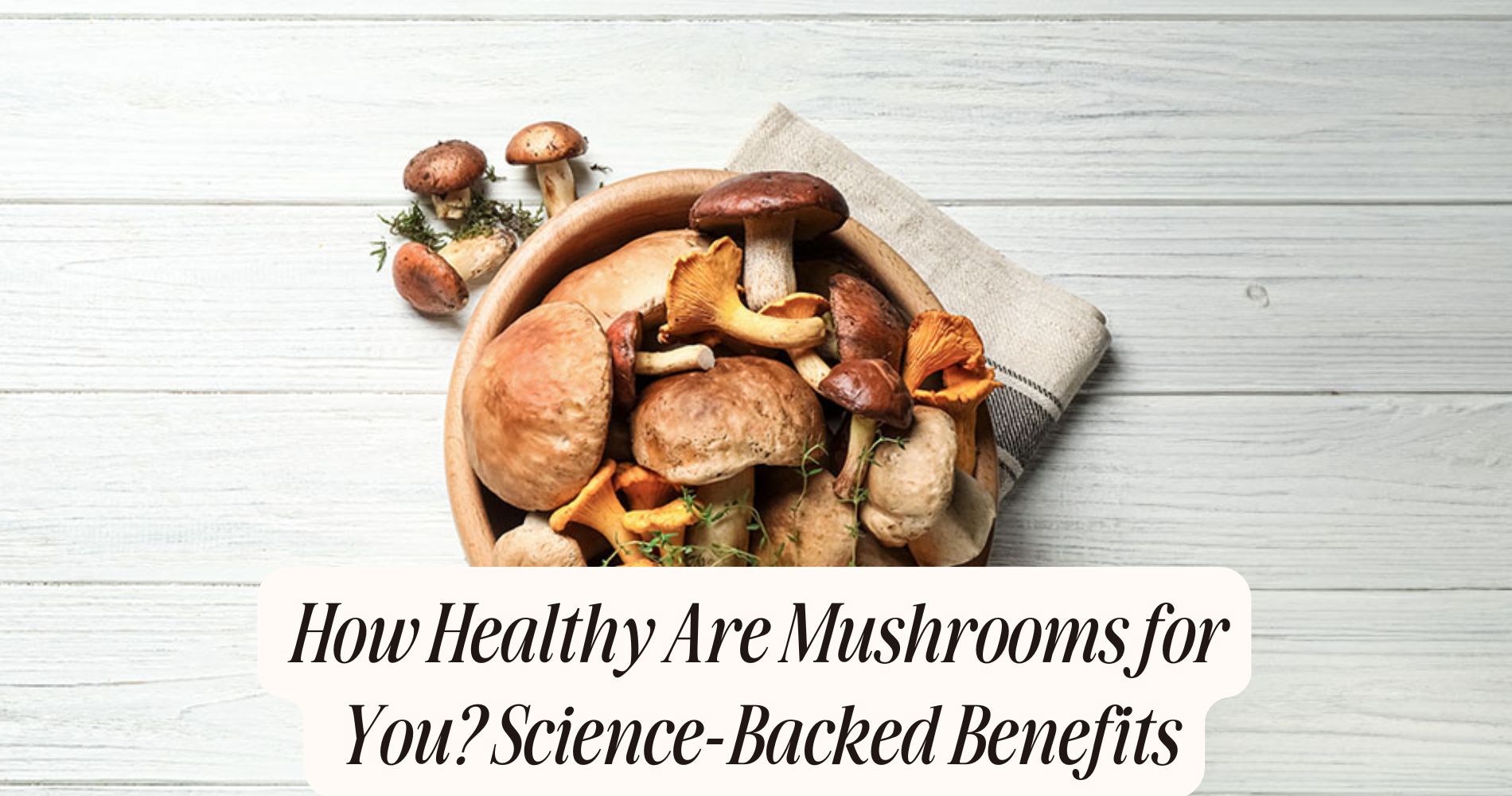
Facts on Mushrooms: 10 Surprising Things You Didn’t Know
Mushrooms are full of fascinating surprises. One of the most intriguing facts on mushrooms is that they are more closely related to animals than plants, making them an evolutionary marvel. The largest organism on Earth is actually a mushroom, spanning 2,385 acres in Oregon! Some mushrooms glow in the dark due to bioluminescence, while others play a crucial role in detoxifying the environment. Beyond their ecological importance, mushrooms have been used in ancient cultures for medicine, spirituality, and even sustainability. Keep reading to uncover more incredible mushroom facts!
Mushrooms Are More Closely Related to Animals Than Plants
Although it might seem surprising, mushrooms are more closely related to animals than plants on the evolutionary tree of life. This connection results from the shared ancestry between fungi and the animal kingdom, highlighting a fascinating aspect of fungal evolution.
You mightn't realize it, but both fungi and animals descended from a common ancestor, diverging from plants over a billion years ago. This divergence is evidenced by the presence of chitin in the cell walls of fungi, a substance also found in the exoskeletons of insects and other arthropods.

Unlike plants, fungi don't perform photosynthesis; instead, they rely on absorbing nutrients, much like animals. Understanding this relationship deepens our appreciation of the complex web of life on Earth.
The Largest Living Organism on Earth Is a Fungus
Significantly, the connection between fungi and the animal kingdom isn't the only remarkable fact about fungi. The largest organism on Earth isn't a whale or a tree but a fungus.
In Oregon's Malheur National Forest, the Armillaria ostoyae, commonly known as the honey fungus, spans over 2,385 acres. This colossal fungal network has been growing for an estimated 2,500 years, making it both ancient and vast.
It spreads underground through a network of mycelium, the thread-like structures that efficiently transport nutrients. The mycelium connects with plant roots, forming symbiotic relationships that are essential for nutrient cycling in ecosystems.
Understanding this extensive organism reveals insights into ecological balance and the significant role fungi play in sustaining environments.
Some Mushrooms Glow in the Dark
A fascinating phenomenon in the fungal world is bioluminescence, where certain mushrooms emit a natural glow. This glow, seen in bioluminescent fungi, is caused by a chemical reaction involving luciferin, an organic compound, and the enzyme luciferase.
The interaction of these elements produces light, allowing some fungi to stand out in their dark, forest habitats. Glowing mushrooms, such as the Panellus stipticus or Mycena chlorophos, give off a greenish luminescence that can be mesmerizing.

This light emission is thought to attract insects, aiding in spore dispersal. By studying these glowing mushrooms, you can gain insights into their ecological roles and evolutionary advantages.
Their glow not only fascinates but also highlights the intricate mechanisms within the fungal kingdom.
Mushrooms Can Clean Up Environmental Pollution
While many may overlook the humble mushroom, its potential for environmental remediation is nothing short of remarkable. You mightn't realize it, but mushrooms employ bioremediation techniques to decontaminate polluted environments.
The secret weapon? Fungal mycelium. This network of thread-like structures breaks down complex pollutants, such as hydrocarbons and heavy metals, into less harmful substances. By secreting powerful enzymes, mycelium can transform toxic waste into non-toxic compounds, effectively cleansing the soil and water.
Consider how fungal mycelium plays a pivotal role in oil spill recovery. It digests oil, reducing environmental impact considerably.
These natural decomposers even tackle persistent organic pollutants, offering a sustainable solution to pollution. Embracing mushrooms for bioremediation could revolutionize how we manage environmental pollutants efficiently.
Fungi Play a Crucial Role in Forest Ecosystems
In the intricate web of forest ecosystems, fungi stand as fundamental contributors, silently orchestrating numerous ecological processes. You mightn't see them, but their presence is significant.
Fungi form extensive mycorrhizal networks that connect with plant roots, facilitating nutrient exchange. This symbiotic relationship enhances plant growth and resilience by providing important nutrients like phosphorus and nitrogen.
Additionally, fungi play a central role in forest decomposition. They break down dead organic matter, recycling nutrients back into the soil, thereby maintaining soil fertility and structure.
By decomposing complex organic materials, fungi release carbon dioxide, a crucial component of the carbon cycle.
Essentially, fungi sustain forest vitality, supporting biodiversity and ensuring ecosystem stability through these indispensable functions.
There Are Medicinal Mushrooms With Powerful Health Benefits
Although often overlooked, medicinal mushrooms possess remarkable health benefits backed by scientific research.
These fungi, such as reishi, shiitake, and maitake, exhibit potent medicinal properties that can enhance your well-being.

Reishi mushrooms, for example, contain triterpenoids and polysaccharides, compounds known for their anti-inflammatory and immune-modulating effects.
Shiitake mushrooms offer health benefits by providing lentinan, a polysaccharide that supports immune function and may even help in cancer treatments.
Maitake mushrooms are rich in beta-glucans, which help regulate blood sugar levels and strengthen the immune system.
Some Mushrooms Have Psychoactive Properties
Psychoactive mushrooms, often referred to as "magic mushrooms," contain compounds like psilocybin and psilocin that can alter perception, mood, and cognitive processes.
These psychoactive effects result from psilocybin converting to psilocin in the body, binding to serotonin receptors in the brain.
You'll find that these mushrooms have a rich history, with evidence of their use in religious and spiritual rituals dating back thousands of years.
Ancient cultures across Mesoamerica utilized them for their mind-altering properties, facilitating mystical experiences and communication with the divine.
Today, researchers are increasingly interested in their potential therapeutic benefits, studying their effects on mental health disorders like depression and anxiety.
However, their legality varies, and they should be approached with caution and respect.
Mushrooms Can Be Used to Create Sustainable Materials
While mushrooms are often celebrated for their culinary and medicinal uses, they also offer remarkable potential in the sphere of sustainable materials. The secret lies in mycelium, the root-like structure of fungi. Mycelium packaging is gaining traction as an eco-friendly alternative to traditional plastics. It's biodegradable, reducing landfill impact and carbon footprint. You can mold mycelium into various shapes, offering versatility for packaging needs.

Additionally, sustainable textiles crafted from mycelium present a fascinating innovation. These textiles aren't only biodegradable but also lightweight and durable, providing a viable alternative to synthetic fabrics.
Fungi Are Essential for Plant Nutrition
Understanding the essential role fungi play in plant nutrition reveals their importance beyond their visible fruiting bodies.
Fungi form symbiotic relationships with plants through mycorrhizal networks, which are intricate underground systems connecting plant roots to fungal hyphae. These networks enhance nutrient absorption by considerably increasing the root surface area.
Fungi facilitate the uptake of essential nutrients like phosphorus and nitrogen from the soil, which are often in forms plants can't directly use. In return, plants supply fungi with carbohydrates produced through photosynthesis.
This mutualistic relationship boosts plant health, growth, and resilience against environmental stressors. By connecting multiple plants, mycorrhizal networks create a supportive community, optimizing nutrient distribution across ecosystems.
Hence, fungi are indispensable for maintaining robust plant nutrition and ecological balance.
The Ancient Use of Mushrooms in Cultural Traditions
Although mushrooms are often seen as mere culinary ingredients today, their significance in ancient cultural traditions is profound and multifaceted.
You'll find that mushrooms played a vital role in shamanic rituals, serving as a bridge between the spiritual and physical worlds. Ancient shamans utilized them to induce altered states of consciousness, facilitating communication with deities or spirits. This wasn't merely for mystical purposes; mushrooms were also revered as potent ancient remedies.
Civilizations such as the Aztecs and Egyptians harnessed their medicinal properties to treat various ailments, recognizing their healing potential long before modern medicine.
Experience the Power of 10 Mushrooms with SUPER MUSHROOM GUMMIES
Want to enjoy the benefits of mushrooms in a quick and delicious way? Well Gummies' SUPER MUSHROOM GUMMIES pack 10 powerful mushroom varieties into a convenient chewable form. Designed to fuel your brain, sharpen focus, and support immunity, these vegan-friendly gummies deliver calmer energy without jitters or crashes. Plus, with a fresh wild berry flavor, they taste as good as your favorite candy! Elevate your wellness routine with these easy-to-take mushroom gummies today.
Frequently Asked Questions
How Do Mushrooms Reproduce?
You'll find that mushrooms reproduce through spore dispersal. Spores release into the environment, landing in suitable conditions to germinate. Fungal mating then occurs, combining genetic material, leading to the formation of a new organism.
What Are the Nutritional Benefits of Eating Mushrooms?
You'll find mushrooms support your immune system with their antioxidants and beta-glucans. They're low in calories, making them excellent for weight management. Eating them regularly can enhance your nutrient intake, promoting overall health and well-being.
Are There Any Poisonous Mushrooms to Avoid?
Yes, you should be cautious when identifying mushrooms, as some poisonous species resemble edible ones. Analyzing features like color, shape, and habitat is essential. Always consult a reliable guide or expert before consuming wild mushrooms to guarantee safety.
How Can You Cultivate Mushrooms at Home?
To cultivate mushrooms at home, start with mushroom kits designed for indoor gardening. These kits provide everything you need, including spores and substrate. Follow the instructions carefully, ensuring appropriate humidity and temperature for successful growth.
What Are the Differences Between Wild and Cultivated Mushrooms?
You'll notice wild species often have diverse flavors and textures, making them unique for culinary uses. Cultivated mushrooms, however, tend to offer consistency and safety, as they're grown under controlled conditions, minimizing exposure to harmful elements.
Conclusion
You've explored the fascinating world of mushrooms, uncovering their surprising traits and ecological significance. You now know they're more animal than plant, and that they form the largest living organism. You've learned about their bioluminescence, pollution-cleaning abilities, and essential role in ecosystems. Mushrooms also offer sustainable material solutions and are crucial for plant nutrition. Their psychoactive properties and ancient cultural uses highlight their diverse applications. This knowledge enhances your appreciation for these remarkable fungi and their impact on our world.




